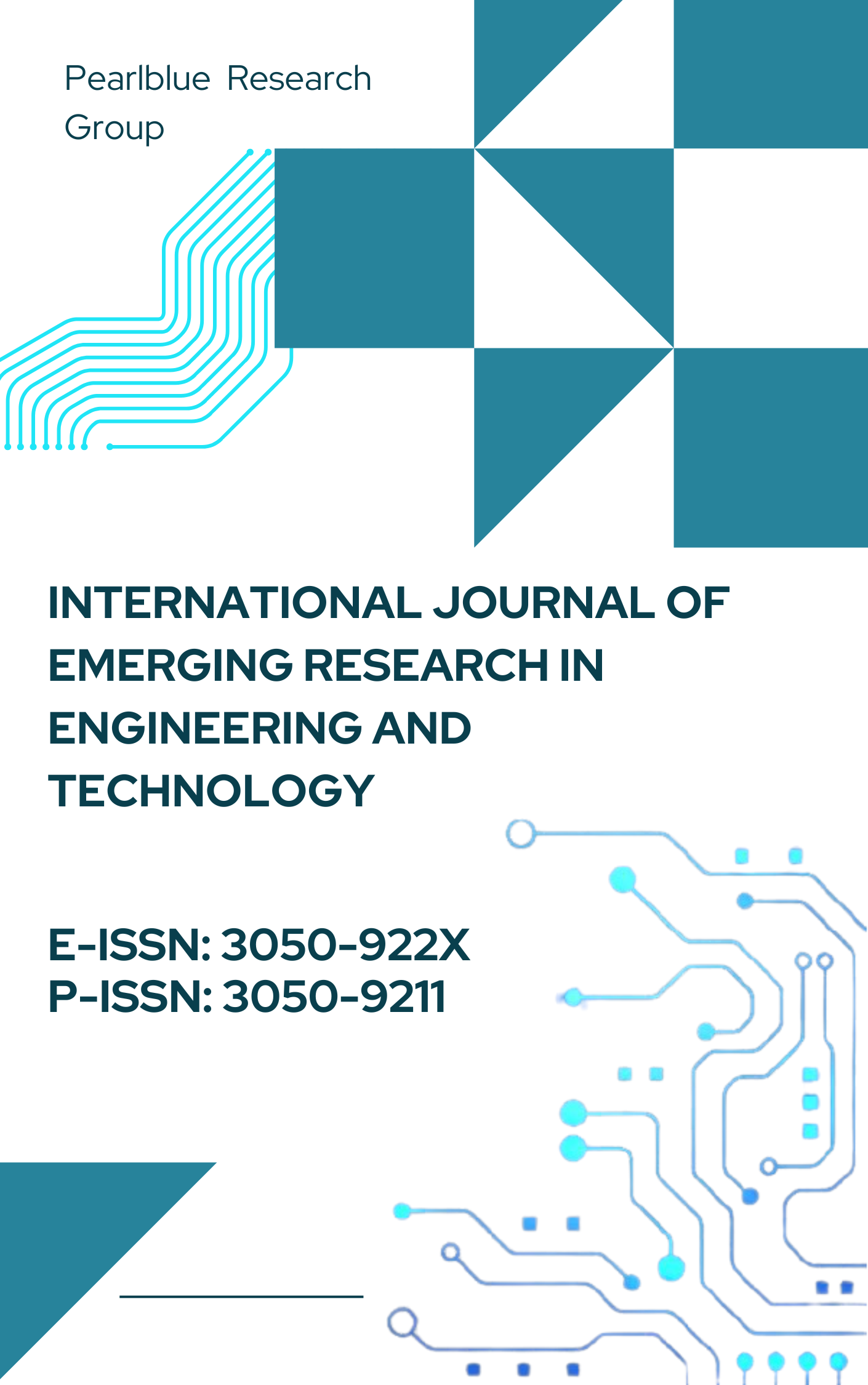Using NLP and AI to Automate Medical Coding and Insurance Claims on Cloud Systems
DOI:
https://doi.org/10.63282/3050-922X.IJERET-V4I4P104Keywords:
Natural Language Processing, Medical Coding, Insurance Claims, Cloud Computing, Deep Learning, Electronic Health Records, ICD, Automation, CPT, Healthcare AIAbstract
Insurance claims processing and medical coding are both very important and, at the same time, consuming aspects of the healthcare administration system. As clinical data and insurance transactions increase daily, traditional manual code processes are becoming ineffective, inaccurate, and costly. The full framework developed in this paper incorporates the technology behind Natural Language Processing (NLP) and Artificial Intelligence (AI) functionality implemented on cloud-based systems to optimize and automate medical coding and insurance claims. The offered system is based on deep learning models trained on annotated Electronic Health Records (EHRs) to retrieve pertinent clinical data, encode it into standard medical code systems (ICD-10-CM, CPT-4), and submit claims to insurance companies through secure cloud connections. It has a modular architecture, making data privacy, regulatory compliance (e.g., HIPAA) and scalability a fact of life. As described in our research, we have various pipelines of NLP to recognize entities, context disambiguation, and mapping the code. Moreover, we also demonstrate how cloud infrastructure enables real-time claim validation, auditing, and feedback loops, thereby improving accuracy. The experimental results indicate that our system can cut down the time of claim processing by 70 percent, positively impact accuracy by 23 percent and cut the administration expenses extremely well. It is finished by discussing limitations, ethical issues and future work in the study
References
1. Devlin, J., Chang, M. W., Lee, K., & Toutanova, K. (2019, June). Bert: Pre-training of deep bidirectional transformers for language understanding. In Proceedings of the 2019 conference of the North American chapter of the association for computational linguistics: human language technologies, volume 1 (long and short papers) (pp. 4171-4186).
2. Rajkomar, A., Dean, J., & Kohane, I. (2019). Machine learning in medicine. New England Journal of Medicine, 380(14), 1347-1358.
3. Chapman, W. W., Nadkarni, P. M., Hirschman, L., D'avolio, L. W., Savova, G. K., & Uzuner, O. (2011). Overcoming barriers to NLP for clinical text: the role of shared tasks and the need for additional creative solutions. Journal of the American Medical Informatics Association, 18(5), 540-543.
4. Wang, Y., Wang, L., Rastegar-Mojarad, M., Moon, S., Shen, F., Afzal, N., ... & Liu, H. (2018). Clinical information extraction applications: a literature review. Journal of biomedical informatics, 77, 34-49.
5. Huang, K., Altosaar, J., & Ranganath, R. (2019). Clinicalbert: Modeling clinical notes and predicting hospital readmission. arXiv preprint arXiv:1904.05342.
6. Shivade, C., Raghavan, P., Fosler-Lussier, E., Embi, P. J., Elhadad, N., Johnson, S. B., & Lai, A. M. (2014). A review of approaches to identifying patient phenotype cohorts using electronic health records. Journal of the American Medical Informatics Association, 21(2), 221-230.
7. Demner-Fushman, D., Chapman, W. W., & McDonald, C. J. (2009). What can natural language processing do for clinical decision support?. Journal of biomedical informatics, 42(5), 760-772.
8. Jagannatha, A. N., & Yu, H. (2016, June). Bidirectional RNN for medical event detection in electronic health records. In Proceedings of the conference. Association for Computational Linguistics. North American Chapter. Meeting (Vol. 2016, p. 473).
9. Lee, J., Yoon, W., Kim, S., Kim, D., Kim, S., So, C. H., & Kang, J. (2020). BioBERT: a pre-trained biomedical language representation model for biomedical text mining. Bioinformatics, 36(4), 1234-1240.
10. Meystre, S. M., Savova, G. K., Kipper-Schuler, K. C., & Hurdle, J. F. (2008). Extracting information from textual documents in the electronic health record: a review of recent research. Yearbook of medical informatics, 17(01), 128-144.
11. Parks, L., & Peters, W. (2023). Natural language processing in mixed-methods text analysis: A workflow approach. International Journal of Social Research Methodology, 26(4), 377-389.
12. Van der Aa, H., Carmona Vargas, J., Leopold, H., Mendling, J., & Padró, L. (2018). Challenges and opportunities of applying natural language processing in business process management. In COLING 2018: The 27th International Conference on Computational Linguistics: Proceedings of the Conference: August 20-26, 2018, Santa Fe, New Mexico, USA (pp. 2791-2801). Association for Computational Linguistics.
13. Hsu, J. C., Wu, M., Kim, C., Vora, B., Lien, Y. T., Jindal, A., ... & Wu, B. (2024). Applications of advanced natural language processing for clinical pharmacology. Clinical Pharmacology & Therapeutics, 115(4), 786-794.
14. Jackson, P., & Moulinier, I. (2007). Natural language processing for online applications.
15. Wojcik, B. E., Stein, C. R., Devore Jr, R. B., & Hassell, L. H. (2006). The challenge of mapping between two medical coding systems. Military medicine, 171(11), 1128-1136.
16. Zhou, B., Yang, G., Shi, Z., & Ma, S. (2022). Natural language processing for smart healthcare. IEEE Reviews in Biomedical Engineering, 17, 4-18.
17. Roy, K., Debdas, S., Kundu, S., Chouhan, S., Mohanty, S., & Biswas, B. (2021). Application of Natural Language Processing in Healthcare Computational Intelligence and Healthcare Informatics, 393-407.
18. Sivarethinamohan, R., Sujatha, S., & Biswas, P. (2021, February). Envisioning the potential of natural language processing (NLP) in health care management. In 2021, the 7th International Engineering Conference “Research & Innovation amid Global Pandemic"(IEC) (pp. 189-193). IEEE.
19. Popowich, F. (2005). Using text mining and natural language processing for health care claims processing. ACM SIGKDD Explorations Newsletter, 7(1), 59-66.
20. Doss, S., Pawar, R., & Maddireddy, R. (2022). Intelligent Automation in Health Insurance. Bimaquest, 22(1).



